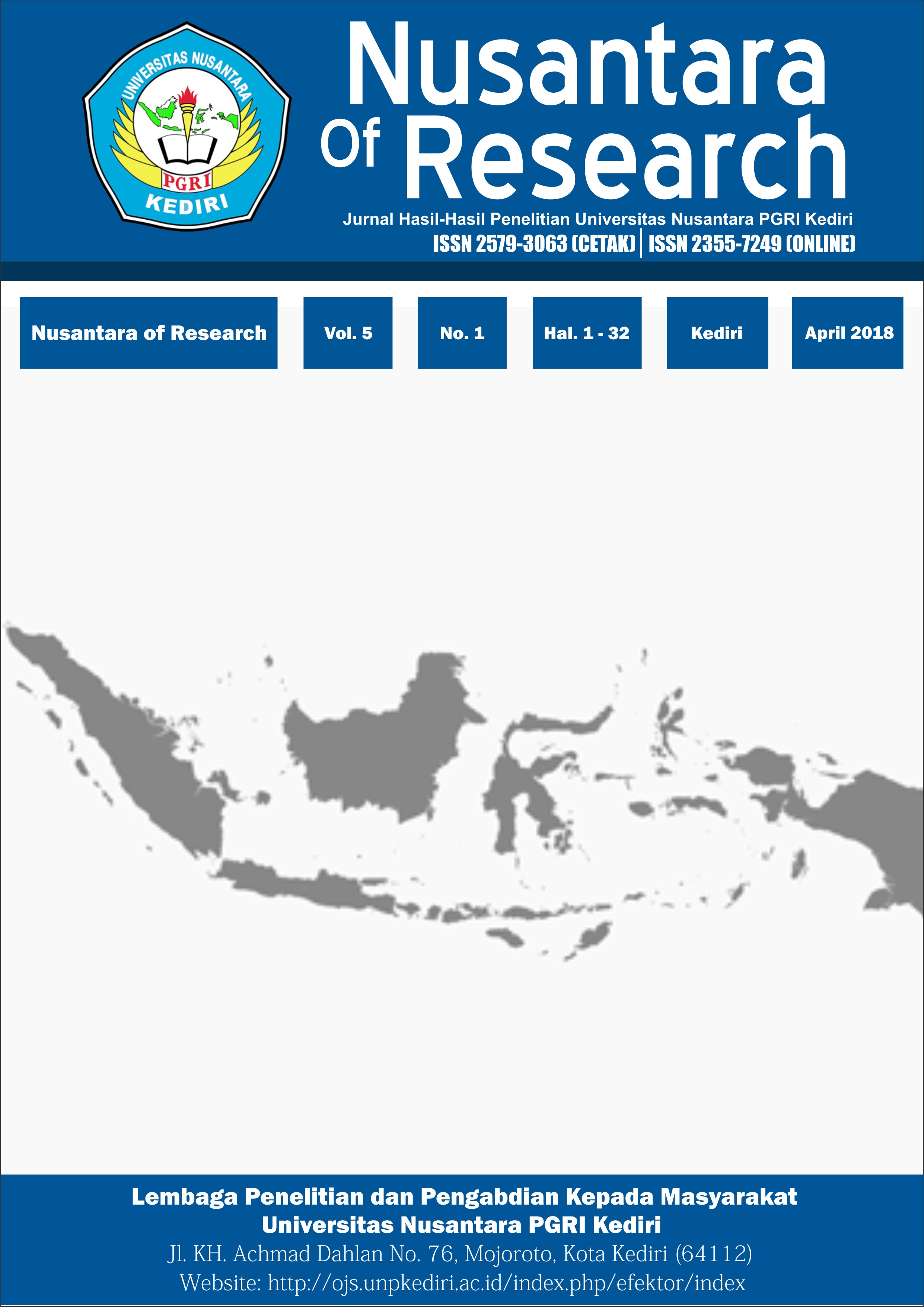HUBUNGAN ANTARA SELF-CONCEPT TERHADAP KEMAMPUAN BERPIKIR KREATIF MATEMATIS SISWA MTSN 4 BANDUNG BARAT
Main Article Content
Abstract
The purpose in this research is examine and describe the relationship between self-concept with students' mathematical creative thinking ability. The method used is descriptive with correlation technique. The population this research is all students of class VII MTSN 4 West Bandung academic year 2017/2018. The samples used were chosen by purposive sampling as many as 35 students. The data collected are test results of mathematical creative ability and questionnaires about self-concept. The instrument used consists of 5 questions of creative thinking ability in the form of a description and 24 statements about student self-concept. Statistical data processing was done by SPSS 21 software that uses product moment correlation test then the result is analyzed descriptively. Based on the research result, it can be concluded that there is a relationship between self-concept to the ability of mathematical creative thinking with correlation of 0.792 at the level of significance 0.000 and the coefficient of determination of 62,73% with good relationship classification. This means that variations in creative thinking can be explained by variations in self-concept, the higher the self-concept of the students ,the higher the ability to think mathematically.
Downloads
Article Details
Issue
Section
Authors who publish with this journal agree to the following terms:
- Copyright on any article is retained by the author(s).
- The author grants the journal, the right of first publication with the work simultaneously licensed under a Creative Commons Attribution License that allows others to share the work with an acknowledgment of the work’s authorship and initial publication in this journal.
- Authors are able to enter into separate, additional contractual arrangements for the non-exclusive distribution of the journal’s published version of the work (e.g., post it to an institutional repository or publish it in a book), with an acknowledgment of its initial publication in this journal.
- Authors are permitted and encouraged to post their work online (e.g., in institutional repositories or on their website) prior to and during the submission process, as it can lead to productive exchanges, as well as earlier and greater citation of published work.
- The article and any associated published material is distributed under the Creative Commons Attribution-ShareAlike 4.0 International License
How to Cite
References
ed.). Bandung: Refika Aditama.
Musriandi, R. (2017). Hubungan Antara Self-concept dengan Kemampuan Pemecahan Masalah
Matematis Siswa. DEDIKASI, 1(2), 150–160.
Pujiadi, K., Asikin. M., & Kartono. (2015). Influence Of Creative Problem Solving Aided With Intractive
Compact Disk Towards Mathematics Learning Achievement Of Grade X Students. International
Journal of Education and Research, 3(3), 611–618.
Purwasih, R &Sariningsih, R. (2017). Pembelajaran Berbasis Masalah untuk Meningkatkan
Kemampuan Berpikir Kreatif dan Self-Concept Siswa SMP. Jurnal Didaktik Matematika, 4(1),
15–24.
Rahman, R. (2012). Hubungan Antara Self-Concept Terhadap Matematika Dengan Kemampuan
Berpikir Kreatif Matematik Siswa. InfinityJ Urnal Ilmiah Program Studi Matematika STKIP
Siliwangi Bandung, 1(1), 19–30.
Sanjaya, W. (2013). Penelitian Pendidikan (Jenis, Metode dan Prosedur). Bandung: Kencana.
Sugiyono. (2011). Metode Penelitian Kuantitatif, Kualitatif dan R&D. Bandung: Alfabeta.
Widodo, S. & Kartikasari. (2017). Pembelajaran Pemecahan Masalah Matematis Siswa Sekolah Dasar
Dengan Model Creative Problem Solving (CPS). Jurnal PRISMA Universitas Suryakancana P,
VI(1), 57–65.




